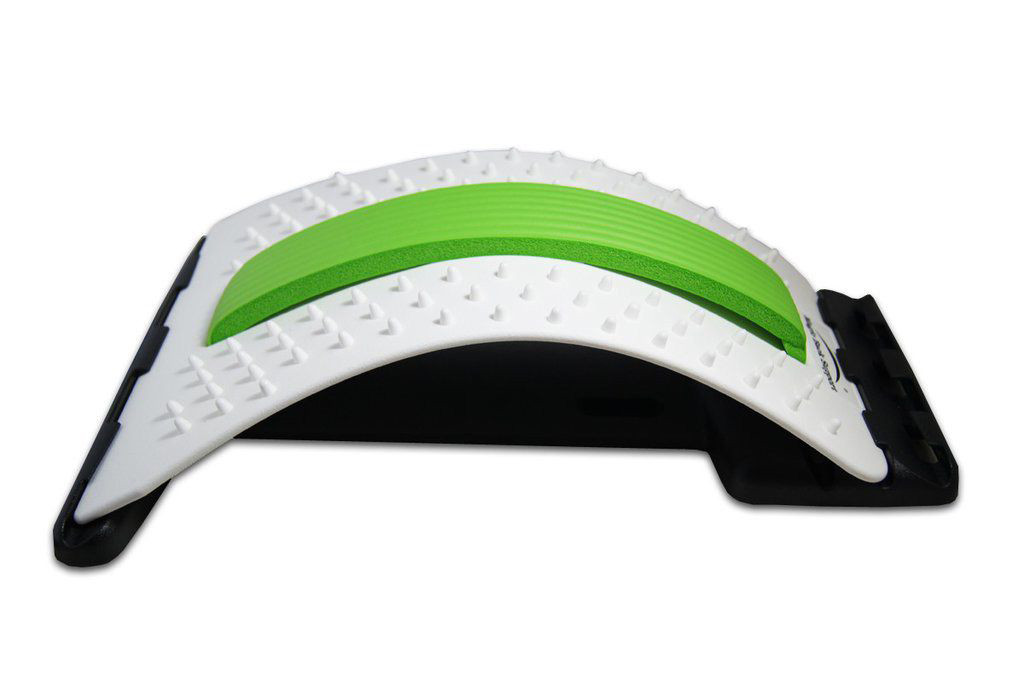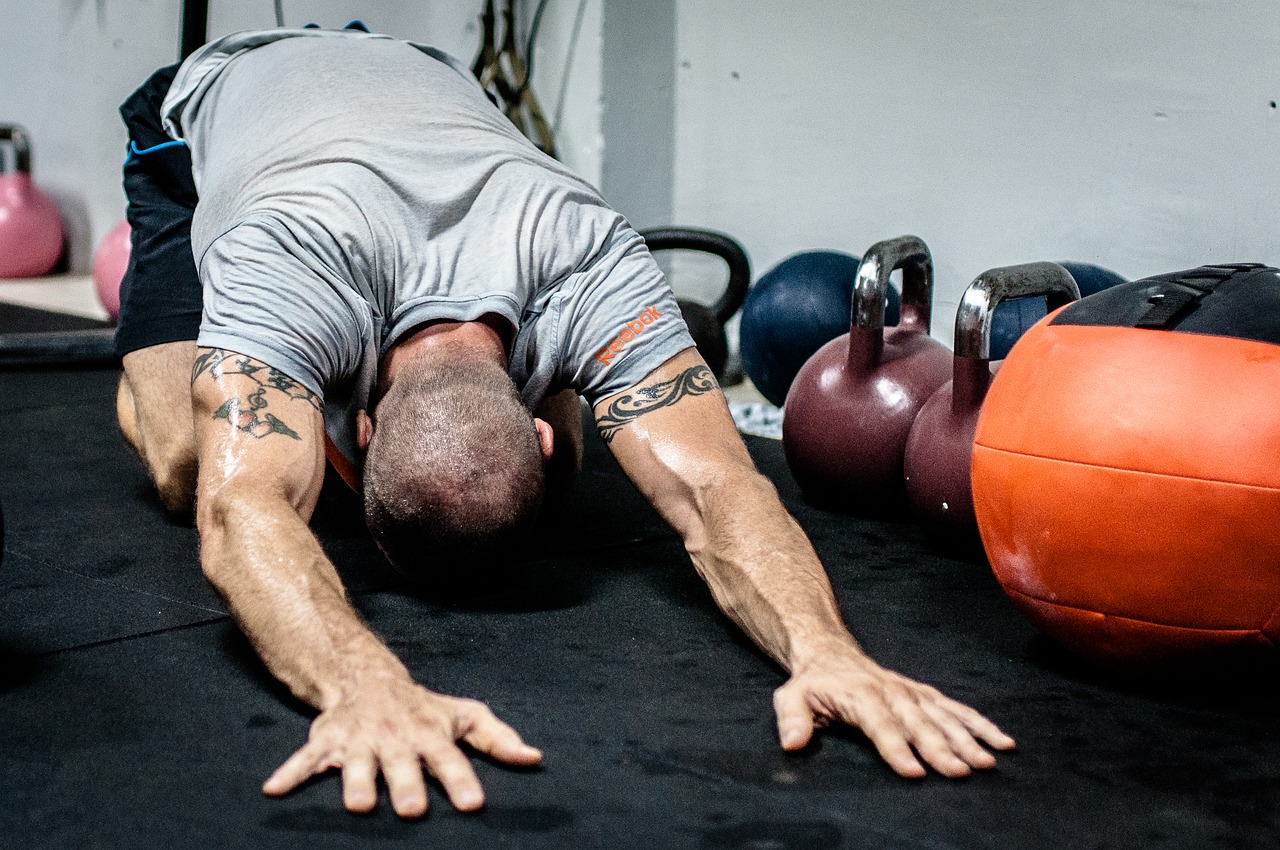If you’re sitting hunched over for hours on end every day, it may be harming your gains. Not only can it ruin your compound lifts like the benchpress, deadlift, and squat, but it also increases your risk for injuries such as shoulder impingement and lower back problems. Simply put, improving your posture will help maximize your gains and and prevent injuries that can keep you out of the gym for months. In this article I’m going to go through how exactly poor posture can make you weaker, and more importantly, what you can do about it.
Internally Rotated Shoulders
One of the biggest issues from hunching over is at the shoulders. Excessive slouching causes your shoulders to internally rotate more than they should. This causes your muscles in the shoulder region to shorten and get locked down at a length that is easiest for your body to maintain its hunched position.
Why exactly is this a bad thing? Well, excessive internal rotation puts you at an increased risk for shoulder impingement which can prevent you from performing lifts like the bench press for a long time. In addition, it limits the range of motion of your shoulders which makes it more difficult for you to perform pressing or overhead movements like the bench press or overhead press. Thus, overtime this poor posture can contribute to a weakened bench press and other compound movements.
Tightened Hip Flexors
When we sit for an extended period of time, especially in a leaning forward position, our hip flexors are placed in a shortened position. Overtime, the hip flexors become overly-tight to the point where they will not fire properly. This inhibits your ability to open your hips quickly and powerfully, which is the basis of almost all lower body movements in weightlifting.
Tight hip flexors will decrease your range of motion and can also result in decreased activation of your glutes and hamstrings. In the long run this will result in a weakening of various lower body movements like the squat and deadlift, which is why it’s vital that you take note of your posture when sitting.
However, proper posture while sitting isn’t enough to fix the problem. The several hours you spend sitting will still cause tightness in certain areas of your body. The various stretches and tools described below will provide you with the best way to correct your posture and imbalances from sitting.
Tools:
1. Back stretchers
 These are simple tools yet provide you with an effective stretch to open up your chest and shoulders. It helps passively lengthen your pectoralis minor and major as well as your front delts, which are some of the main muscles causing your “hunched over” posture.
These are simple tools yet provide you with an effective stretch to open up your chest and shoulders. It helps passively lengthen your pectoralis minor and major as well as your front delts, which are some of the main muscles causing your “hunched over” posture.
To use a back stretcher, simply lie down and place it on your mid/upper back and raise your arms up straight over your head. Relax in this position for 2-5 minutes at a time and repeat a few times a day. After weeks of regular use you’ll notice your posture slowly correcting itself.
2. Trigger Point Massagers
Trigger point massagers are excellent for relieving trigger points that are causing you to tense up. Use this tool on your pectoralis major and minor, front delts, and on various trigger points on your scapula. Place firm pressure for around 30 seconds (or until the muscle relaxes) on the trigger points you find, and do this a few times throughout the day for the best results. You can even use this on areas in your lower back that are tensed up from sitting.
Stretches:
1. Doorway stretch

This is an excellent stretch to open up and loosen your chest and shoulder muscles.
Simply place your hands on both sides of a doorway, and lean forward until you feel an adequate stretch.
Do this stretch a few times a day for around 30s each time.
2. Hip flexor stretch

This stretch is a great way to loosen your hip flexors that have been shortened from prolonged sitting. Place one foot infront and one behind, and bend the front leg to a 90-degree angle. Then, lean forward by extending the back leg until you feel a stretch in the hip flexor of the front leg. Hold this for around 30s and repeat a few times a day.
Extra Tips:
1. Always be aware of your posture.
One of the easiest things you can do to correct your posture is to simply sit and stand properly. While at work or school it’s quite easy to get distracted and allow your body to conform into a position that is the most comfortable, which is often a “hunched over” position.
This is why it’s vital that you always be cautious of how you are sitting or standing. Simple cues like “bringing your shoulders back”and “keeping your head aligned with your spine” are helpful to instantly improve your posture.
2. Take frequent walk breaks.
Regardless of if you are sitting with perfect posture, prolonged hours of sitting will still shorten certain muscles and lead to imbalances. In addition, sitting is even becoming known as an independent risk factor for cardiovascular disease.
Thus, it’s important that you take frequent walk breaks to give your hip flexors and other muscles a break from constant shortening. A brief walk every hour is ideal, but anything is better than nothing.
In summary, you need to be mindful of your posture and make an effort to improve it. It will allow you to perform better at the gym, reduce your risk for injury, and prevent imbalances that may be hindering activation of certain muscles. Use the various tips discussed in this article and you’ll notice an improvement in no time.

 Jeremy is a personal trainer and Kinesiologist based in Vancouver, Canada. He specializes in fat loss and HIIT, which led him to create HIITyourbody.com. From quick HIIT workouts to full out HIIT plans, you can find it on his site.
Jeremy is a personal trainer and Kinesiologist based in Vancouver, Canada. He specializes in fat loss and HIIT, which led him to create HIITyourbody.com. From quick HIIT workouts to full out HIIT plans, you can find it on his site.
You Can Contact Him At –
Facebook: HIIT Your Body
